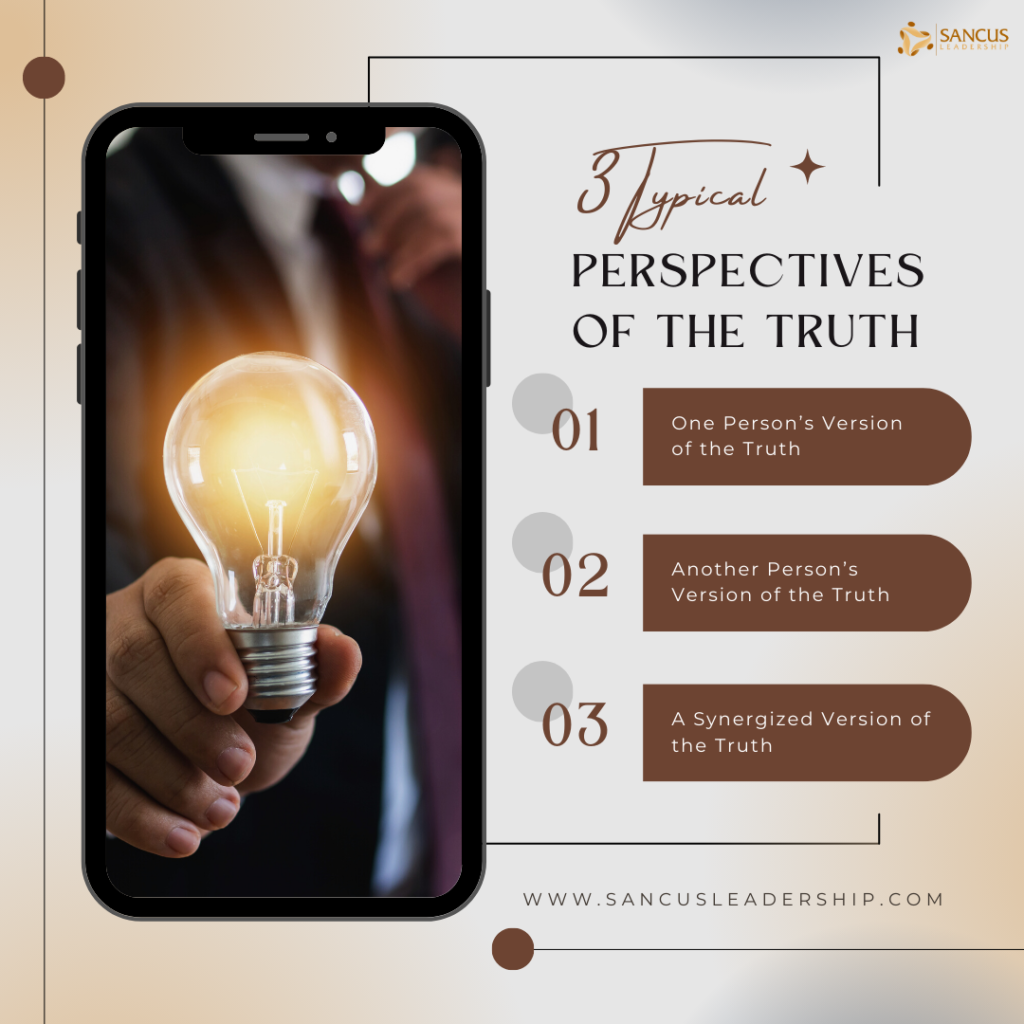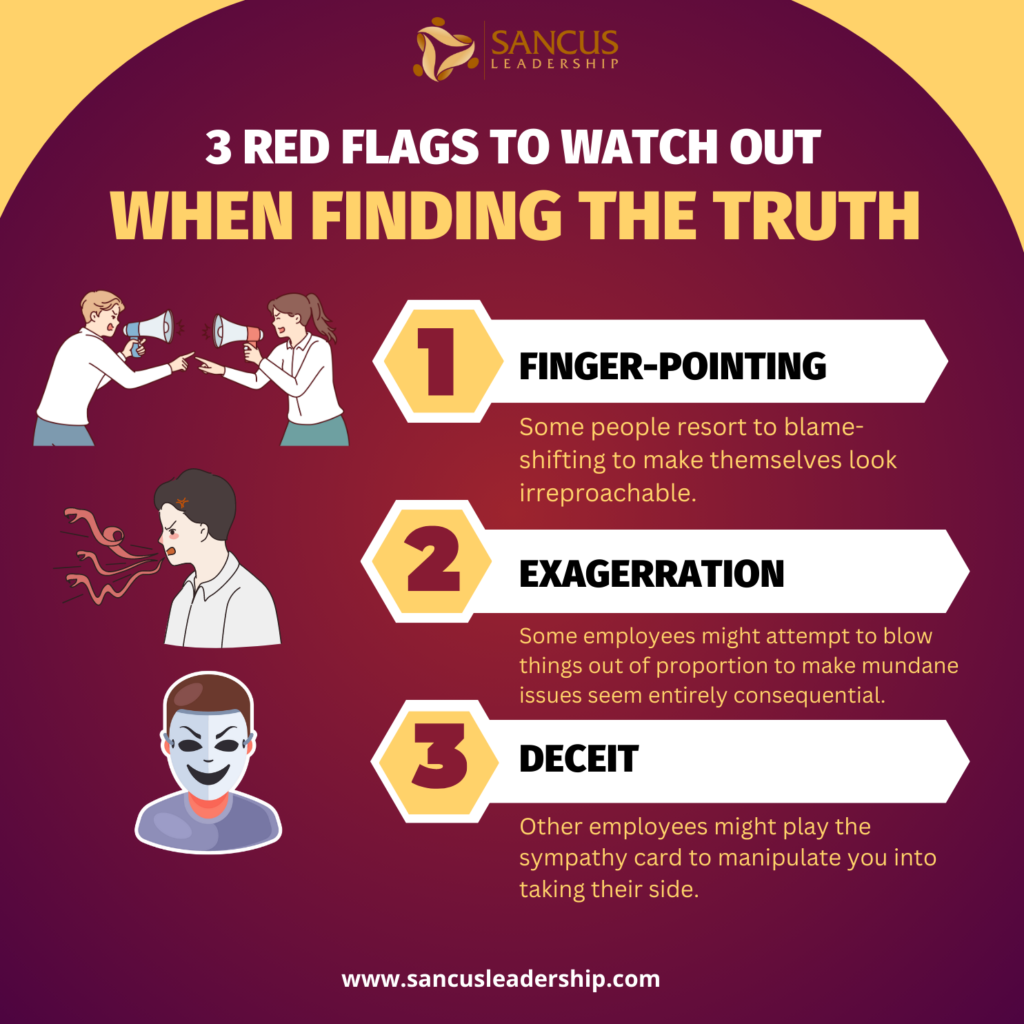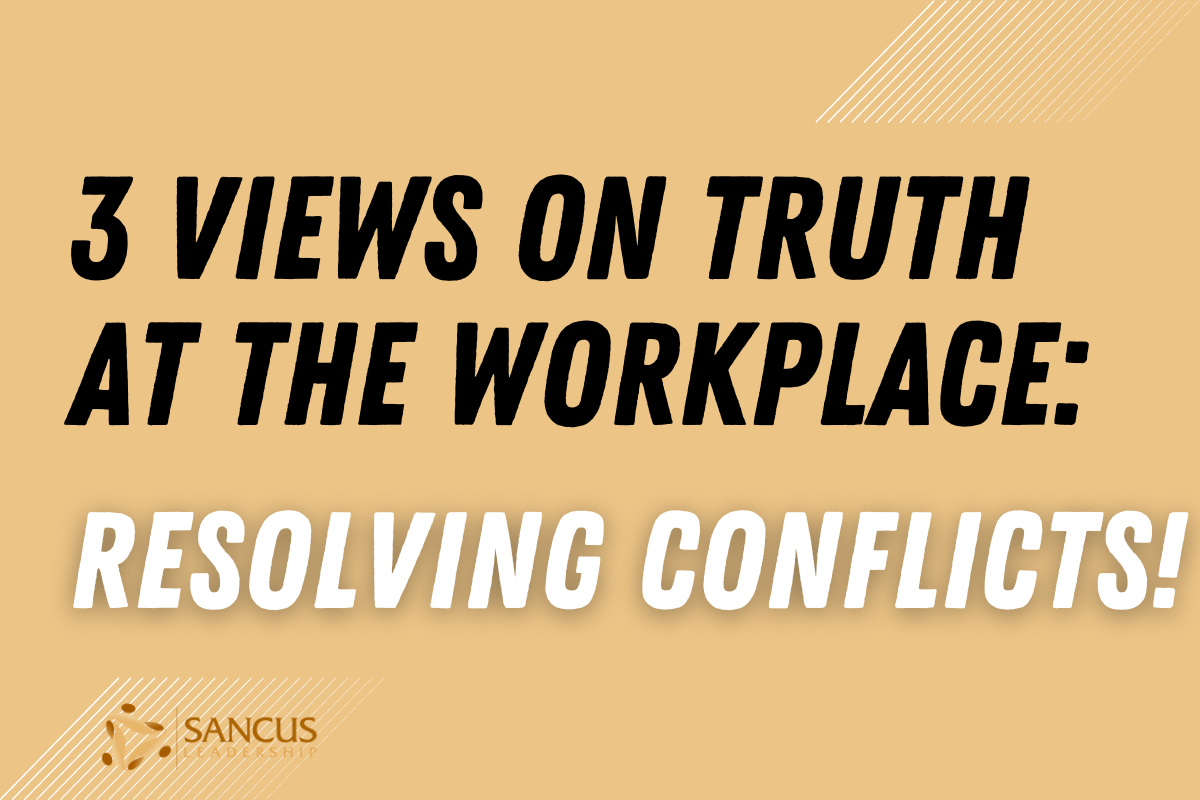Resolving conflicts in the workplace has been one of the most challenging roles during my time as a leader. It is inescapable and essential because unresolved disputes affect the team’s workflow, synergy, and productivity. Conflict resolution is crucial to the organization’s success, and you must quickly recognize and understand arguments to develop a helpful solution.
Views on truth at the workplace in resolving conflicts can typically be broken down into 3 — one person’s perspective, the other person’s viewpoint, and a synergized version of the truth — with all three not necessarily wholly accurate. The key is to arrive at an impartial form of the actual truth.
Views on truth at the workplace in resolving conflicts can typically be broken down into 3 — one person’s perspective, the other person’s viewpoint, and a synergized version of the truth…
This article will talk about three major views on the truth when resolving conflicts in the workplace, including one person’s point of view, another person’s perspective, and the collaborative version of the truth, which merges both perspectives impartially and logically. We will also discuss red flags to watch out for while resolving conflicts, the negative impact of unresolved disputes within the team, and some tips for resolving conflicts. Let’s start!
What Is Truth in Leadership?

Truth in leadership is the benchmark for establishing your reputation as a trustworthy, respectable, and credible leader. It’s about exemplifying the value of honesty and transparency in everything you do. Set good examples for your team so they’ll look up to you as a role model worth emulating.
Truth in leadership is the benchmark for establishing your reputation as a trustworthy, respectable, and credible leader.
Advocating the truth in the workplace is handy, especially when resolving conflicts. However, we sometimes find ourselves battling with the truth because of its varying interpretations. This is where conflicts arise — determining which version is, in fact, accurate — and leaders typically take on the role of mediator in resolving these disputes.
Here are some typical perspectives of the truth worth considering when striving to resolve conflicts at the workplace:

1. One Person’s Version of the Truth
“Everything we hear is an opinion, not a fact. Everything we see is a perspective, not the truth.”
Everything we hear is an opinion, not a fact. Everything we see is a perspective, not the truth.
This quote from the Roman emperor and philosopher Marcus Aurelius rings true even in today’s modern world. One person’s point of view is their truth. It is a subjective version, seen through their eyes and influenced by their thoughts and emotions at a given time. Do not confuse this with a post-modern view that there is NO truth.
This is how most conflicts arise. People have different perspectives of the truth; sometimes, none are utterly wrong or entirely correct. As a leader in the workplace, you must spearhead efforts to resolve these conflicts so team spirit won’t be shattered and the workflow won’t be disrupted. One person’s version might differ from another’s, but that doesn’t necessarily mean one is lying.
As a leader in the workplace, you must spearhead efforts to resolve these conflicts so team spirit won’t be shattered and the workflow won’t be disrupted.
Leading and managing a team requires you to be impartial and fair when striving to resolve conflicts. Here are some tips on how best to end up with a just resolution that benefits the parties involved:
- Deal with it head-on. Please don’t bury your head in the sand, hoping conflicts will eventually disappear. This is risky because disputes can swiftly reach a point where resolutions become practically impossible since bridges have been burned. A small problem today will multiply tomorrow.
- Be proactive. Rather than waiting for a conflict to rear its ugly head, immediately take charge of the situation before matters get worse. This is a great way to ensure that things stay in proportion.
- One-on-one talks. Seek to have a confidential discussion with each individual involved and actively hear their side of the story. At this point, avoid making generalizations and conclusions, focusing on facts rather than emotions and temperaments.
2. Another Person’s Version of the Truth
This version typically contrasts with the first version. It is another individual’s take on what happened and usually consists of variations compared to the first version. Remember that people have different perspectives, so you must not conclude based only on what you think is most logical and acceptable.
As a leader, you must be level-headed, impartial, and intuitive when resolving conflict. Remember that you’re dealing with individuals exhibiting aversion and hatred against each other. Be mindful that there might be unfair, self-serving, manipulative tactics used to get you to swing to one side.
Here are some red flags to watch out for:

- Finger-pointing. Some people resort to blame-shifting to make themselves look irreproachable.
- Exaggeration. Some employees might attempt to blow things out of proportion to make mundane issues seem entirely consequential.
- Deceit. Other employees might play the sympathy card to manipulate you into taking their side. They may tell half-truths and blatant lies to win your sympathy and favor.
3. A Synergized Version of the Truth
Since different people have different perspectives, getting to the bottom of these variations is crucial to take a step closer to conflict resolution. When disputes arise, you must factor in people’s unique standpoints, agendas, and emotions because these can significantly alter their take on what happened.
The truth is sometimes a blend of details intricately intertwined to form a whole. When there’s a conflict in determining the truth, a healthy dialogue is the secret ingredient. This is how misgivings are aired and heard, and misconceptions are cleared. Ultimately, a compromise is reached where each person’s truth is factored in, effectively resolving the conflict.
Conflict resolution is crucial in maintaining healthy working relationships within the team. If these disputes aren’t destroyed or settled amicably, your organization could face disastrous consequences. Here are some of them:
- Reduced productivity. Teamwork is affected when there are unresolved conflicts in the workplace. Employees can’t function as efficiently, even the ones who aren’t directly involved in the issue. Some might even take sides, creating barriers within a functional, collaborative team.
- Low morale. The whole team will eventually feel the hate with certain employees at odds. This can affect their enthusiasm about accomplishing their tasks and may even distract them from efficiently achieving set goals.
- Low retention rate. Some employees may leave the organization if unresolved conflicts fester within the team. Your best employees, specifically, may start looking for greener pastures where there is healthier, safer, and more inspiring work culture.
| View | Key Points |
| One Person’s Version | Conflicts arise due to different perspectives of the truth. One person’s version may differ from another’s, but it doesn’t mean one is lying. Efforts should be made to resolve conflicts and maintain team spirit and workflow. |
| Another Person’s Version | This version contrasts with the first version. It represents another individual’s perspective on what happened. Different perspectives must be considered, and conclusions should not be based solely on personal judgment. |
| A Synergized Version | Different people have different perspectives. Understanding unique standpoints, agendas, and emotions is crucial in conflict resolution. Healthy dialogue and compromise can lead to a resolution where each person’s truth is considered. |
Here’s a TED Talk by Liz Kislik where she describes the causes that can lock people into unproductive conflict and shares five steps to enable people in any kind of organization to identify the underpinnings of a conflict and work through it effectively.



